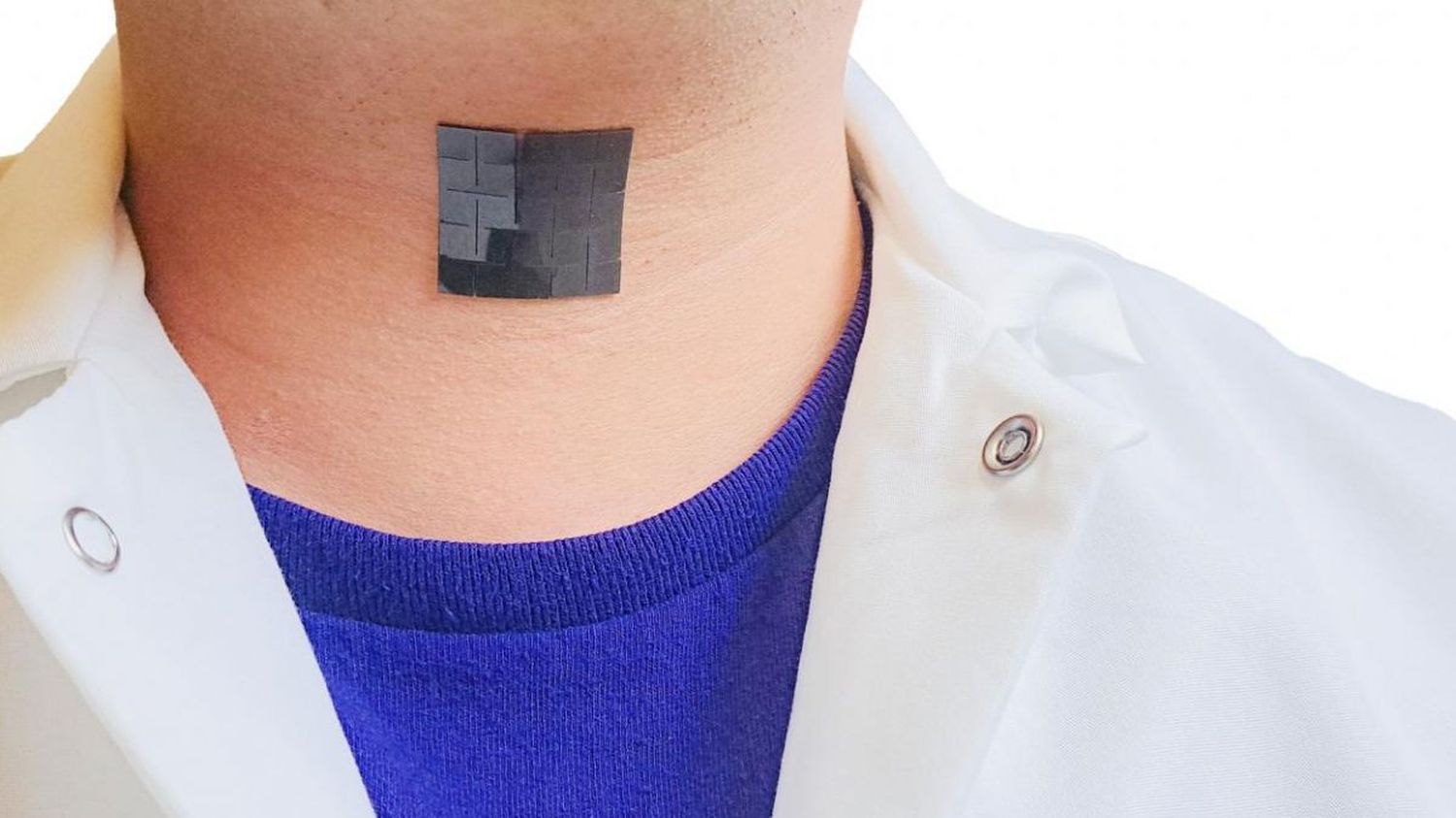It is an innovative medical device: a small patch that is placed on the skin at the throat, which captures the movements of the muscles of the larynx – the organ of speech – and transforms them into electrical signals.

Published
Update
Reading time: 2 min

Martin Ducret, doctor and journalist at Doctor’s Daily, tells us today about a medical technological innovation, a patch that sticks to the throat and allows speech to be reproduced without using the vocal cords.
francienfo: Real hope for patients with voice disorders?
Martin Ducret: Yes, it is a team of scientists from the University of California (UCLA) who presented in the journal Nature Communications, this innovative medical device. It is a small patch measuring 3 cm by 3, 1.5 mm thick, and weighing only 7.2 g that is placed on the skin, at the level of the throat, which captures muscle movements. of the larynx – the organ of speech – and transforms them into electrical signals.
Thanks to artificial intelligence, these electrical signals are then translated into vocal signals, and rendered into audible sounds of 40 decibels, that is to say sounds understandable from 1 meter, the usual distance of a conversation.
Does this mean that this device can reproduce speech without the need for the action of the vocal cords?
Yes exactly. You should know that, normally, the vibration of the vocal cords, in addition to the contraction of the larynx muscles, is essential to produce the sound of a voice. But with this patch, you don’t necessarily need the vocal cords.
Thanks to the innovative materials it is made from, it can produce audible speech using only the movements of the larynx. All in a small format, with resistance to perspiration, and without the use of a battery – the patch is self-powered thanks to the movements of the larynx.
Which patients could benefit from this patch in the future?
“Patients with dysphonia, that is to say a voice disorder which makes it very quiet and unsightly, Professor Bertrand Baujat, head of the ENT and head and neck surgery department, at Tenon hospital in Paris, explained to me.
Eventually, some patients have had partial larynx surgery following cancer. But beware, Professor Baujat pointed out to me, even if this patch demonstrates undeniable technological prowess, and offers a very interesting avenue of research, its clinical usefulness remains to be demonstrated.”
In fact, it was only tested on eight healthy volunteers, to train the artificial intelligence and evaluate its proper functioning. Further studies on patients suffering from voice disorders are therefore necessary to validate the effectiveness of this innovative patch.
